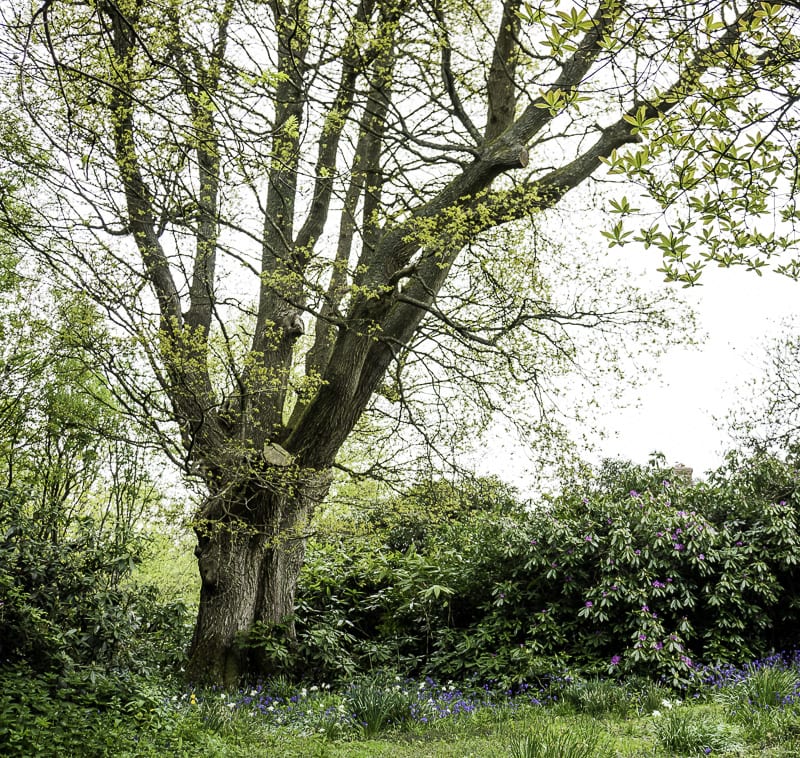 I recently asked a group of kids to hug a tree. This group naturally included my twins Luce and Theo. Now, before you start to think that I was doing this to make them feel closer to nature or turn into ‘tree huggers,’ that wasn’t my aim.
I recently asked a group of kids to hug a tree. This group naturally included my twins Luce and Theo. Now, before you start to think that I was doing this to make them feel closer to nature or turn into ‘tree huggers,’ that wasn’t my aim.
Sometimes environmentalists are known as tree huggers due to their work to protect and preserve woodlands. As a young journalist I actually covered in 1996 Swampy and other eco-warriors who were living among – and even chained to – trees to stop the construction of a bypass in Newbury.
No, I wanted the kids to hug a tree to estimate its age! Nor was I planning for some random tree hugging but had one particular oak I wanted them to date. I’ve written before about visiting this ancient tree on private land with Luce and Theo but no one was sure exactly how old it was. (Luce and Theo have also grown since this picture of them standing by the oak last summer!)
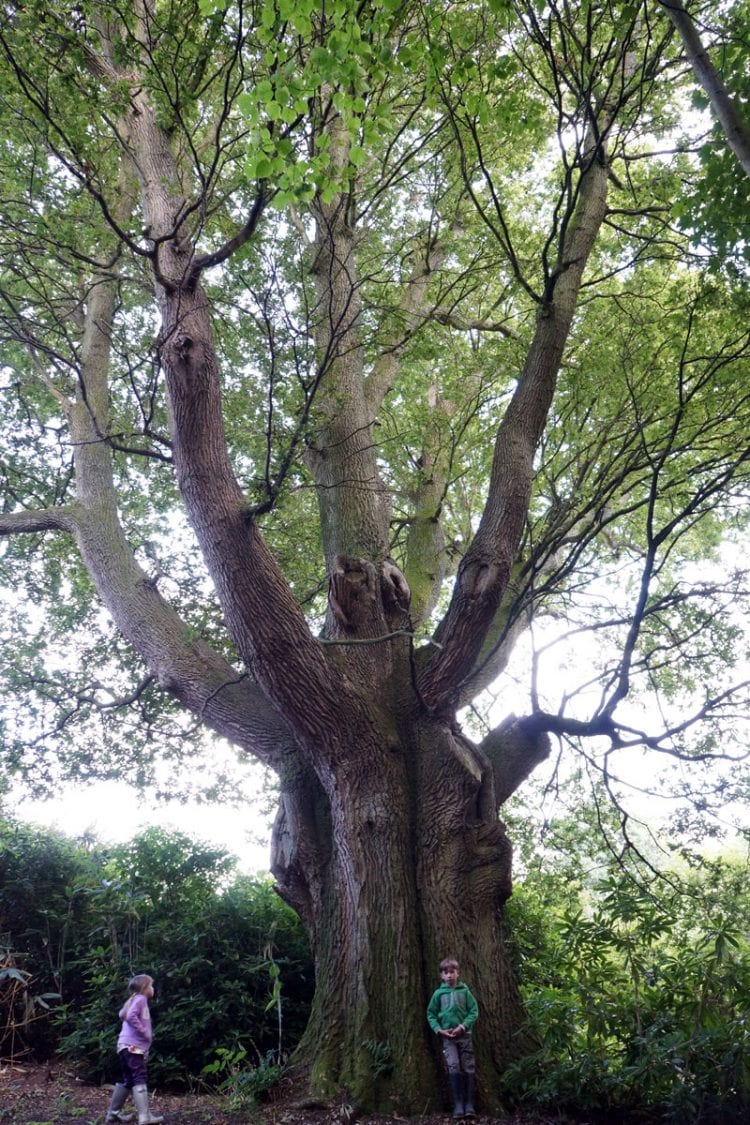 Then I read in Tessa Wardley’s The Woodland Book that you can age a tree by hugging it.
Then I read in Tessa Wardley’s The Woodland Book that you can age a tree by hugging it.
Tree species grow at the same rate under similar conditions. So, for example, if you planted a couple of beech trees near each other in your garden, every year their girth and height will grow at a similar rate. If you also planted a couple of oak trees they would grow together at a different rate from the beech trees.
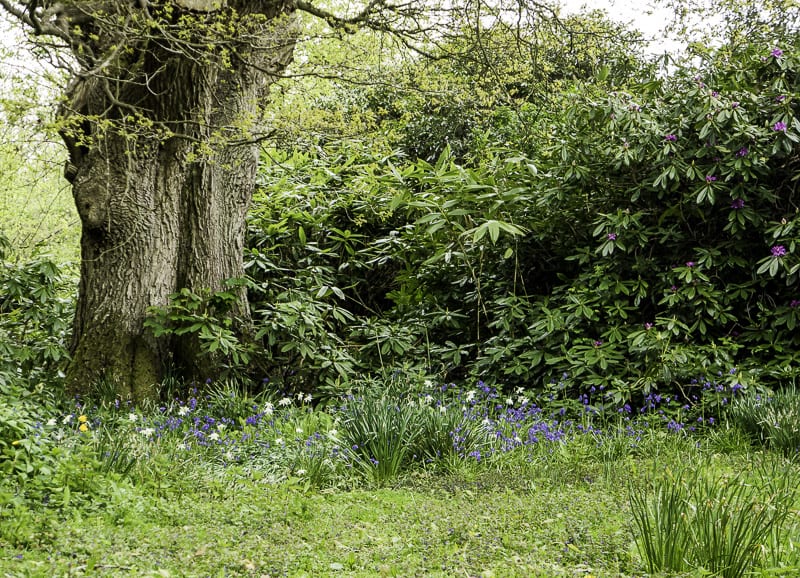 In order to age a tree without cutting it down and counting the rings in the trunk you can calculate how old it is by the size of its circumference at breast height. The Diameter Breast Height (or DBH) – yes, that’s the official term – of a tree trunk varies from 1.3 to 1.5 metres according to different countries and groups.
In order to age a tree without cutting it down and counting the rings in the trunk you can calculate how old it is by the size of its circumference at breast height. The Diameter Breast Height (or DBH) – yes, that’s the official term – of a tree trunk varies from 1.3 to 1.5 metres according to different countries and groups.
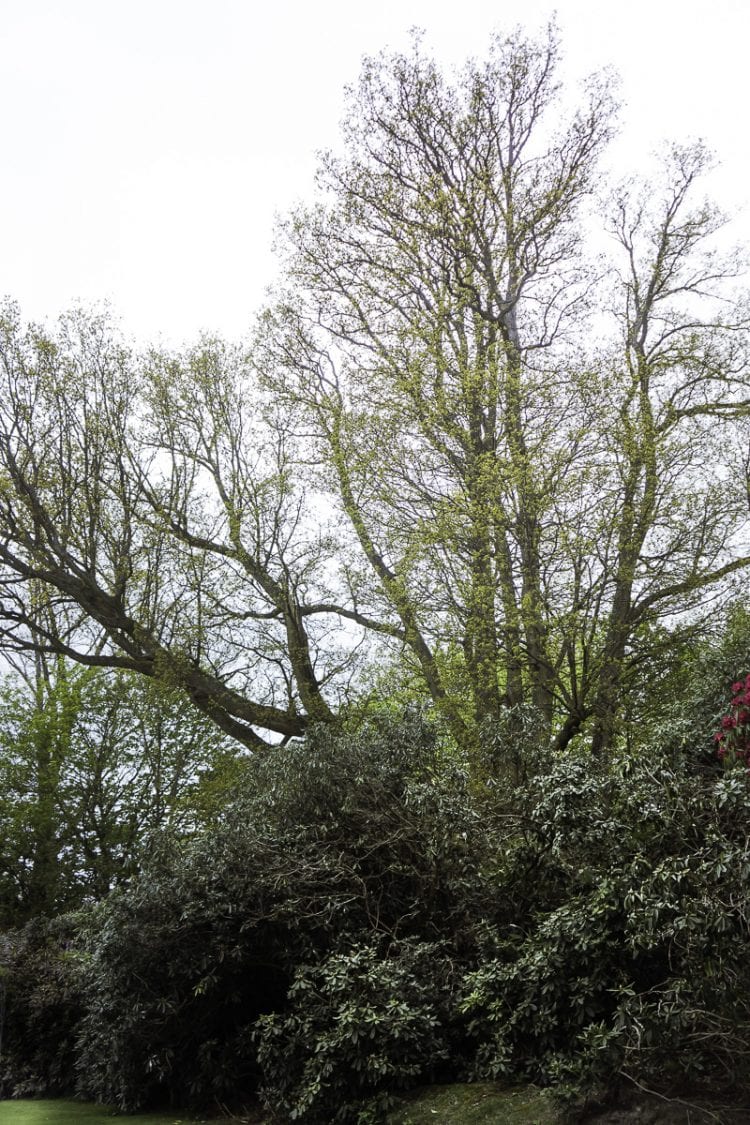
The ancient oak surrounded by shrubs
Then there’s a tree aging formula which is DBH x ‘growth factor’ to estimate the age of the tree. The growth factor is different for different tree species and can vary depending on the conditions of the location, such as whether it’s been pampered in open parkland or unprotected inside woods.
Hug a tree to measure its girth
Forgot the tape measure at home? You didn’t bring a tape measure with you on a walk in the woods?
You don’t need the tape measure as you can also work out if a tree is ancient by hugging it. The average arm span is approximately equal to your height. Generally an average adult ‘tree hug’ is considered 1.5 metres from finger tip to finger tip. We measured all the kids heights to know their arm spans.
How many hugs does an ancient tree need?
According to the Woodland trust, a tree might be ancient if it has the following measurements in HUGS:
Oak – 3 adult hugs
Beech – 2 adult hugs
Scots Pine– 1 adult hug
Rowan – one adult hug
Birch – a wrist hug
Hawthorn – an elbow hug
Cedar of Lebanon – 4 adult hugs
Field Maple – 1 adult hug
Sweet Chestnut – 4 adult hugs
Ash – 2 adult hugs
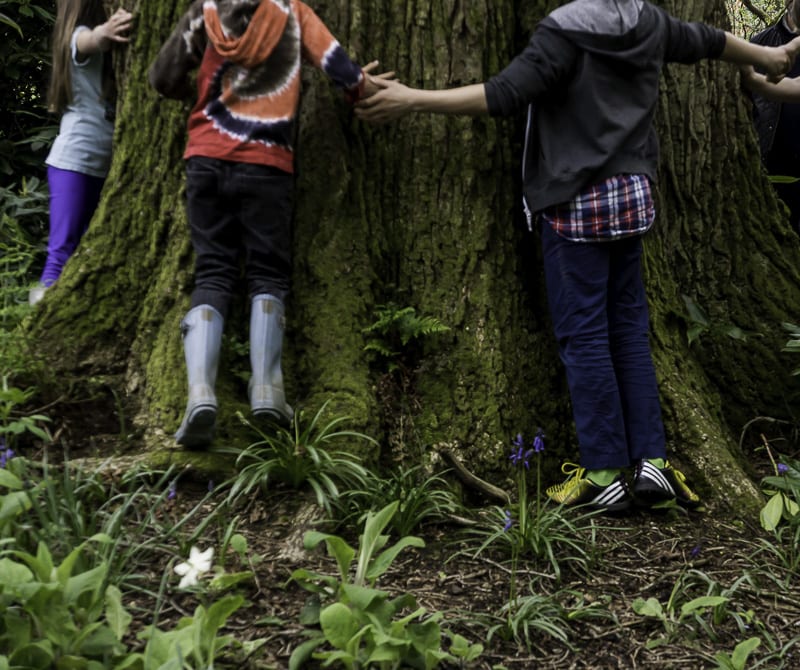
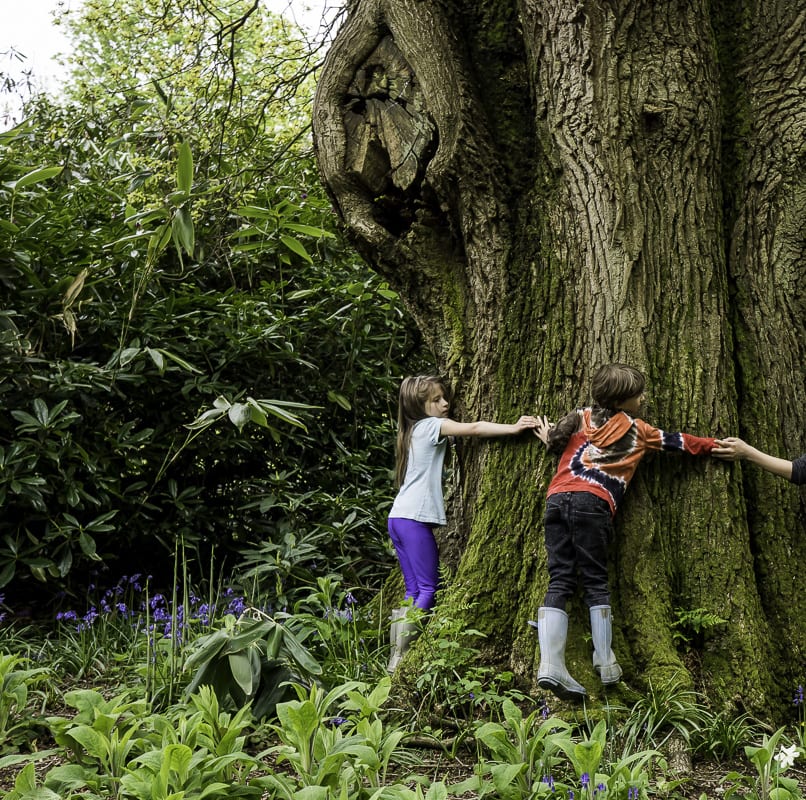 Five children hugs were needed for our oak. This was a total of 710 cms! But how ancient was it?
Five children hugs were needed for our oak. This was a total of 710 cms! But how ancient was it?
According to my book I just needed to divide this by 2 to find out the age, which meant the tree was only 355 years or so old. Yet, we were sure the tree was much older.
Back home I found online a complicated paper by the Forestry Commission about ‘Estimating the Age of Large and Veteran Trees in Britain.’ There were all sorts of different calculations depending on the conditions where a tree species was located. In sum, this oak could have been anywhere from 440 to 575 years old.
Then I found another paper by the Woodland trust on how to estimate the age of oak trees. The calculations were based on an oak growing in open conditions in the south-east of England which is roughly the same as the one dated by our young tree huggers. Our ancient oak was at least 515 years old!
My US readers can find a tree aging formula for American tree species in this Forestry post.
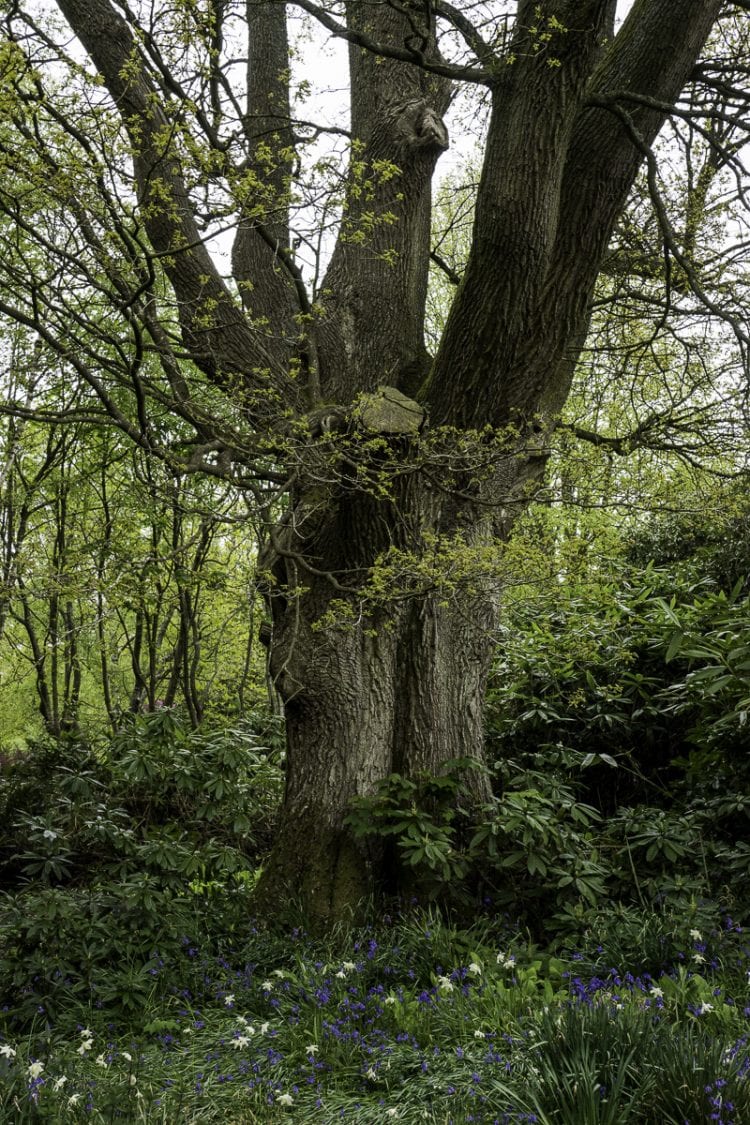 From the tree hug we now knew that this ancient oak was probably an acorn when Henry VII ruled England from 1485 to 1509. It would have been a young oak while Henry VIII went through eight wives. In my view this oak tree over a half a century later deserved a special hug from five children.
From the tree hug we now knew that this ancient oak was probably an acorn when Henry VII ruled England from 1485 to 1509. It would have been a young oak while Henry VIII went through eight wives. In my view this oak tree over a half a century later deserved a special hug from five children.
And if you’re a Pinterest fan like me…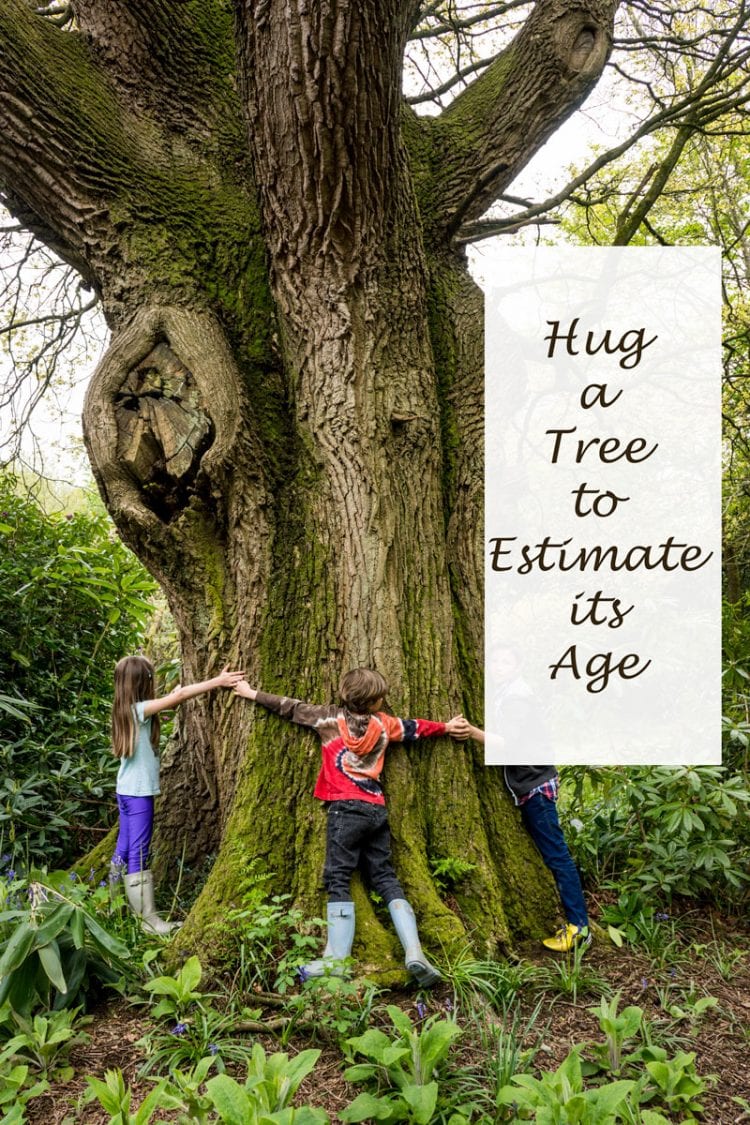

Pingback: 365 Days Hands-On Homeschool Activities (Year Long Learning)
Fantastic photo’s. The youngones love tree hugging….
What I love about Country Kids and blogging is that I learn new things every day. How wonderful for the children to be physically involved in nature like this learning maths as they go! Great photos of them all round the tree. Thank you for sharing with me on Country Kids.
I love this! I hope we have enough of us out together the next time we see an old tree and want to estimate its age 🙂
I love everything about this post, but I am particularly delighted by the list of hugs needed for each tree to decide if it might be ancient. I foresee lots of hugging in our future.
This is fascinating, so very clever! Your kids must’ve loved hugging that beautiful tree and finding out its age 🙂 #countrykids
What an interesting idea. I had not heard about aging a tree in this manner. Thanks for sharing. Love the pics.
What a brilliant way to learn about nature! I have to remember this trick for when my little one is a bit older, that is really neat. And what a respectably aged oak that is too 🙂 Sounds like a fun activity and I bet the kids found it fascinating! #countrykids
Brilliant! The kids must have had such a good time hugging that tree and then finding out how old it might be. It’s interesting how the different methods give varying answers, but I guess it’s really quite tricky to work out the age of an ancient tree!
I’d never thought about estimating the age of a tree before or how you would do it while it is still alive. As for Henry VIII I’m sure he would have been happy enough with a few extra wives. Poor Catherine, jilted after 2O years of marriage! Died of a broken heart. She could have left us messages on this oak tree. That would have made dating it easier :o)
I read about measuring a tree by hugs recently too. Funny that all your calculations had different results but at least you know the tree is ‘very old’. Here’s to a few more hundred years!